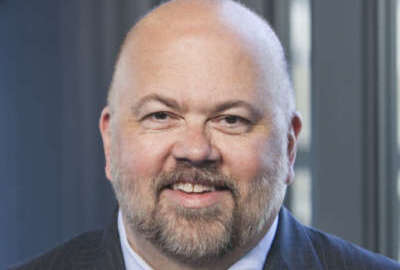

The recent passing of former President George H.W. Bush prompted a lot of discussion about Bush and his experience in government before his presidency. "41,” as...
This column was originally published on Jeff Neal’s blog, ChiefHRO.com, and was republished here with permission from the author.
The recent passing of former President George H.W. Bush prompted the usual remembrances and ceremonies, and a lot of discussion about Bush and his experience in government before his presidency.
I was a federal employee during his term in office, working in Navy Human Resources. “41,” as he came to be known following his son’s election as the 43rd president of the United States, came from a background in government. He served in the military, the legislative branch, and the executive branch. Unlike other presidents, he knew what government could and could not do because he had been in government for years.
His presidency was generally positive for federal workers. It saw passage of the Federal Employees Pay Comparability Act and the appointment of an Office of Personnel Management Director Constance Berry Newman, who was one of the most highly regarded directors in the agency’s 40-year history. Within a week of his inauguration, Bush met with members of the Senior Executive Service to ask that they join as members of his team. The Washington Post quoted then-Senior Executives Association President Carol Bonosaro as saying “The message he was sending was so clear. It was, ‘You’re an important part of my team, and I value you.’ When they walked out of there, they would have walked on water for him.”
Presidents usually come into government with little or no real experience in the executive branch. Presidents Donald Trump, Barack Obama, Bush 43, Bill Clinton, Ronald Reagan and Jimmy Carter had none (other than military service by George W. Bush and Carter). In many respects, all of them approached the workforce from the perspective of an outsider, although Carter did take a personal interest in the civil service and signed the Civil Service Reform Act of 1978. In my estimation, Carter and Bush 41 were the only presidents in the past 40 years to engage with federal workers in a truly constructive manner.
We often view issues in government through the lens of partisanship, but in many respects federal workforce issues cross party lines. That’s because both parties have benefited from using federal workers to score political points. Here are just a few examples:
The federal workforce is one of the most potent tools of the presidency. As chief executive, the president leads more than 2 million employees. They can and will carry out the priorities of the administration, as long as they are legal. Those senior executives who would have done everything they could to support 41 would have done the same for Clinton, had he asked, or for Obama or Trump.
Imagine having 2 million people at your disposal, with a combined 27 million years of experience — based on the average length of service for 2.08 million workers — who are sworn to uphold the Constitution and faithfully execute their duties. Now imagine ignoring those people, or worse, actively disparaging them. Presidents of both parties should understand that the federal workforce is not the enemy, nor are they people who should be ignored. They are an asset, and the primary means of turning most presidential priorities into actions. They can and will do their duty, and they can and will deliver results.
Presidents should also recognize that a leader of the United Sates criticizing his or her own workforce is much like a general criticizing his own troops right before sending them into battle. Little can be gained and much can be lost.
Jeff Neal is a senior vice president for ICF and founder of the blog, ChiefHRO.com. Before coming to ICF, Neal was the chief human capital officer at the Homeland Security Department and the chief human resources officer at the Defense Logistics Agency.
Copyright © 2025 Federal News Network. All rights reserved. This website is not intended for users located within the European Economic Area.


